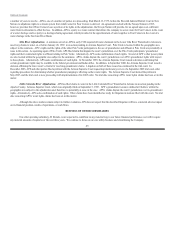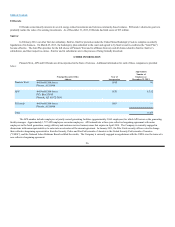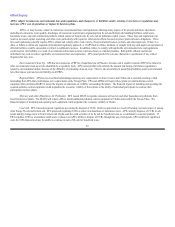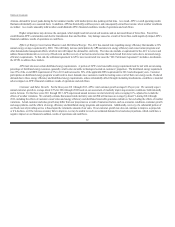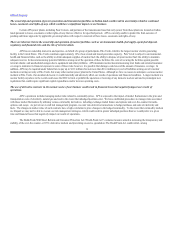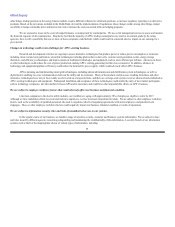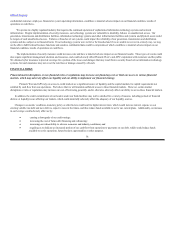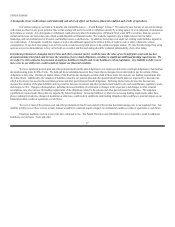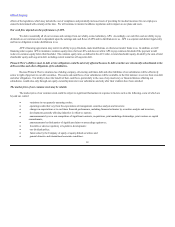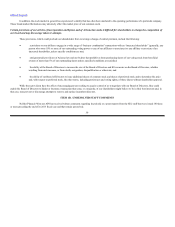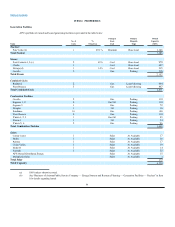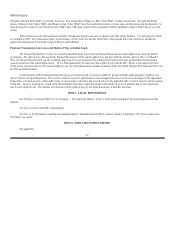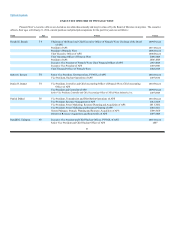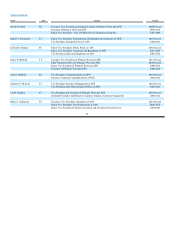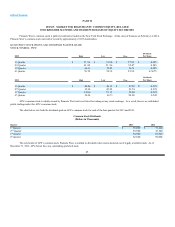APS 2013 Annual Report Download - page 38
Download and view the complete annual report
Please find page 38 of the 2013 APS annual report below. You can navigate through the pages in the report by either clicking on the pages listed below, or by using the keyword search tool below to find specific information within the annual report.
Table of Contents
other things, trading positions in the energy futures markets, require different collateral or settlement positions, or increase regulatory reporting over derivative
positions. Based on the provisions included in the Dodd-Frank Act and the implementation of regulations, these changes could, among other things, impact
our ability to hedge commodity price and interest rate risk or increase the costs associated with our hedging programs.
We are exposed to losses in the event of nonperformance or nonpayment by counterparties. We use a risk management process to assess and monitor
the financial exposure of all counterparties. Despite the fact that the majority of APS’s trading counterparties are rated as investment grade by the rating
agencies, there is still a possibility that one or more of these companies could default, which could result in a material adverse impact on our earnings for a
given period.
Changes in technology could create challenges for APS’s existing business.
Research and development activities are ongoing to assess alternative technologies that produce power or reduce power consumption or emissions,
including clean coal and coal gasification, renewable technologies including photovoltaic (solar) cells, customer-sited generation (solar), energy storage
(batteries), and efficiency technologies, and improvements in traditional technologies and equipment, such as more efficient gas turbines. Advances in these,
or other technologies could reduce the cost of power production, making APS’s existing generating facilities less economical. In addition, advances in
technology and equipment/appliance efficiency could reduce the demand for power supply, which could adversely affect APS’s business.
APS is pursuing and implementing smart grid technologies, including advanced transmission and distribution system technologies, as well as
digital meters enabling two-way communications between the utility and its customers. Many of the products and processes resulting from these and other
alternative technologies have not yet been widely used or tested on a long-term basis, and their use on large-scale systems is not as advanced and established as
APS’s existing technologies and equipment. Widespread installation and acceptance of these technologies could enable the entry of new market participants,
such as technology companies, into the interface between APS and its customers and could have other unpredictable effects on APS’s business.
We are subject to employee workforce factors that could adversely affect our business and financial condition.
Like most companies in the electric utility industry, our workforce is aging, with approximately 38% of employees eligible to retire by 2017.
Although we have undertaken efforts to recruit and train new employees, we face increased competition for talent. We are subject to other employee workforce
factors, such as the availability of qualified personnel, the need to negotiate collective bargaining agreements with union employees and potential work
stoppages. These or other employee workforce factors could negatively impact our business, financial condition or results of operations.
We are subject to information security risks and risks of unauthorized access to our systems .
In the regular course of our business, we handle a range of sensitive security, customer and business systems information. We are subject to laws
and rules issued by different agencies concerning safeguarding and maintaining the confidentiality of this information. A security breach of our information
systems such as theft or the inappropriate release of certain types of information, including
35


